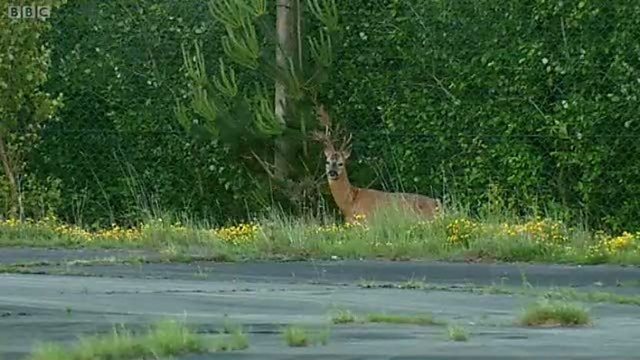
MOD cons
By 1945, the Ministry of Defence owned a fifth of Great Britain. Off-limits to most of us, many of these areas have stayed wild and nature often thrives here. At Greenham Common, which is now a wildlife conservation area, there are six abandoned cruise-missile silos. They are buried under two metres of concrete, three metres of sand, and tons of top soil. But when the Cold War ended and the cruise missiles were moved out, Nature began to reclaim the area. Concrete and steel are no match for Mother Nature and even a barn owl has moved in. Examining the owls pellets, Alan Titchmarsh finds small mammal bones and some fur, all indigestible. Inside the silos, rafters have been fitted and blankets hang from the walls. Inside one blanket is a noctule bat, one of our largest bats, with a blunt snout and little rounded ears. As it looks like a mouse with wings, it is sometimes called a flitter mouse. Bats like this have moved in all over Greenham Common.
Duration:
This clip is from
Featured in...
![]()
大象传媒 Nature
Be captivated, informed and inspired by the world's wildlife.
More clips from Modern Times
-
![]()
Caring for the country
Duration: 04:21
-
![]()
Coastal buffer
Duration: 01:55
-
![]()
Moor repairs
Duration: 02:34
-
![]()
Red squirrel Eden
Duration: 03:03
More clips from British Isles: A Natural History
-
![]()
Gastronomic garden snails—Taming the Wild
Duration: 01:04
-
![]()
Canal plants—Revolution
Duration: 01:17
-
![]()
Japanese knotweed—Our Future
Duration: 03:20
-
![]()
Falcon quarry—Revolution
Duration: 01:44










